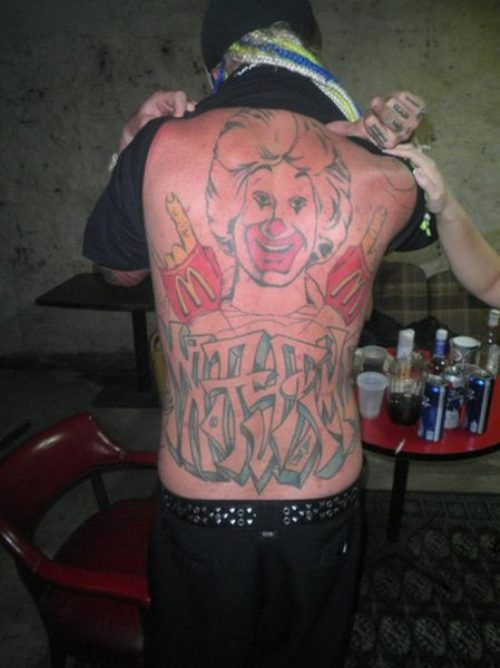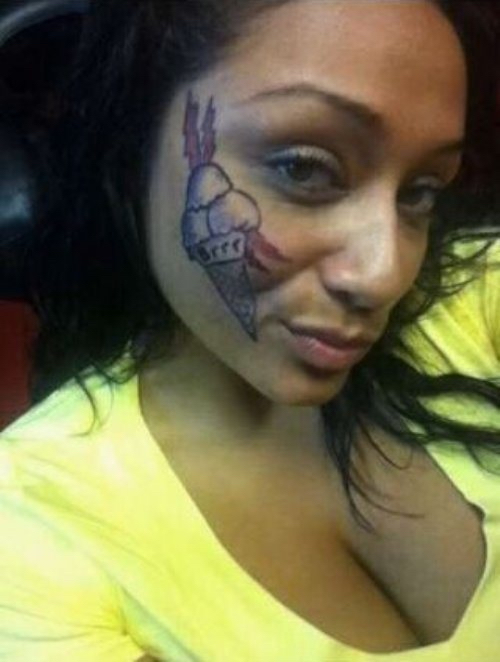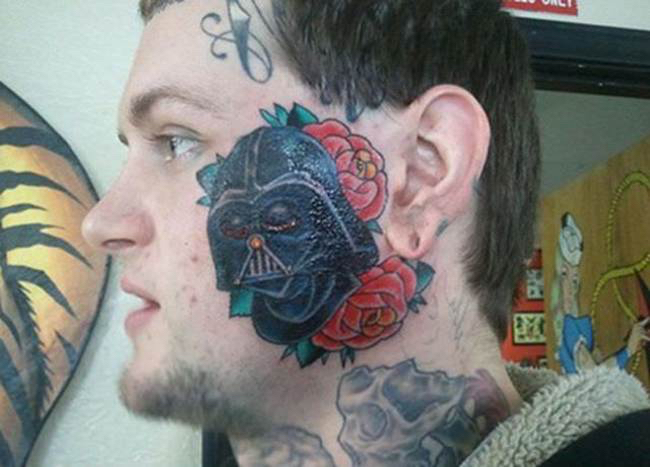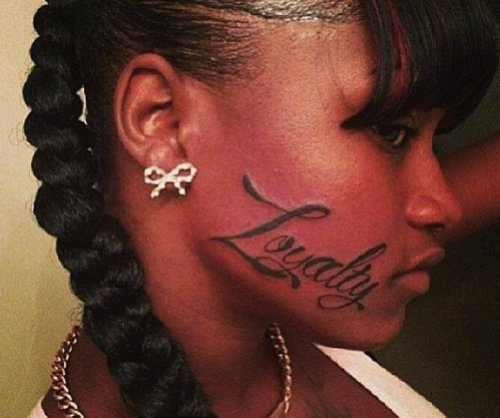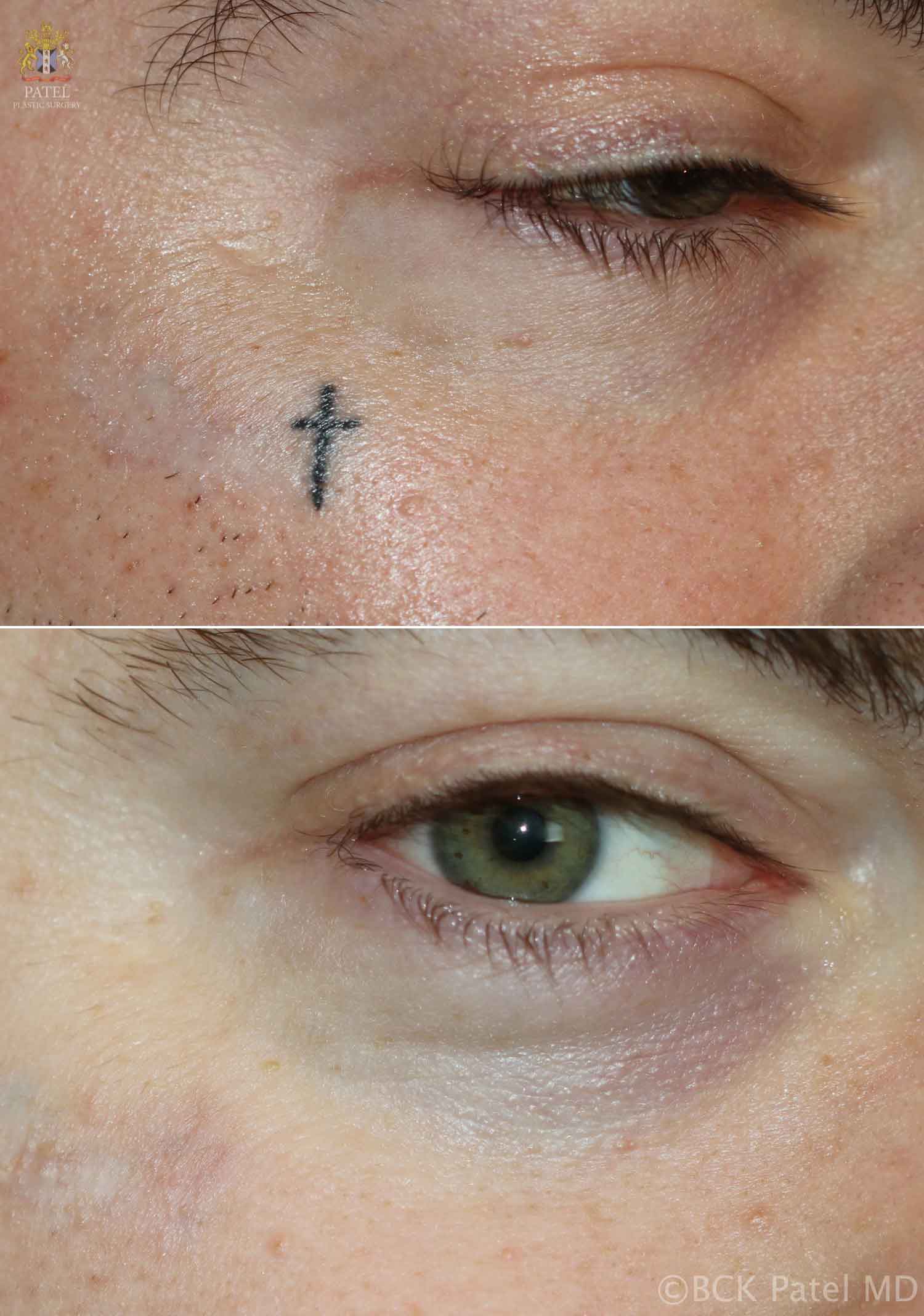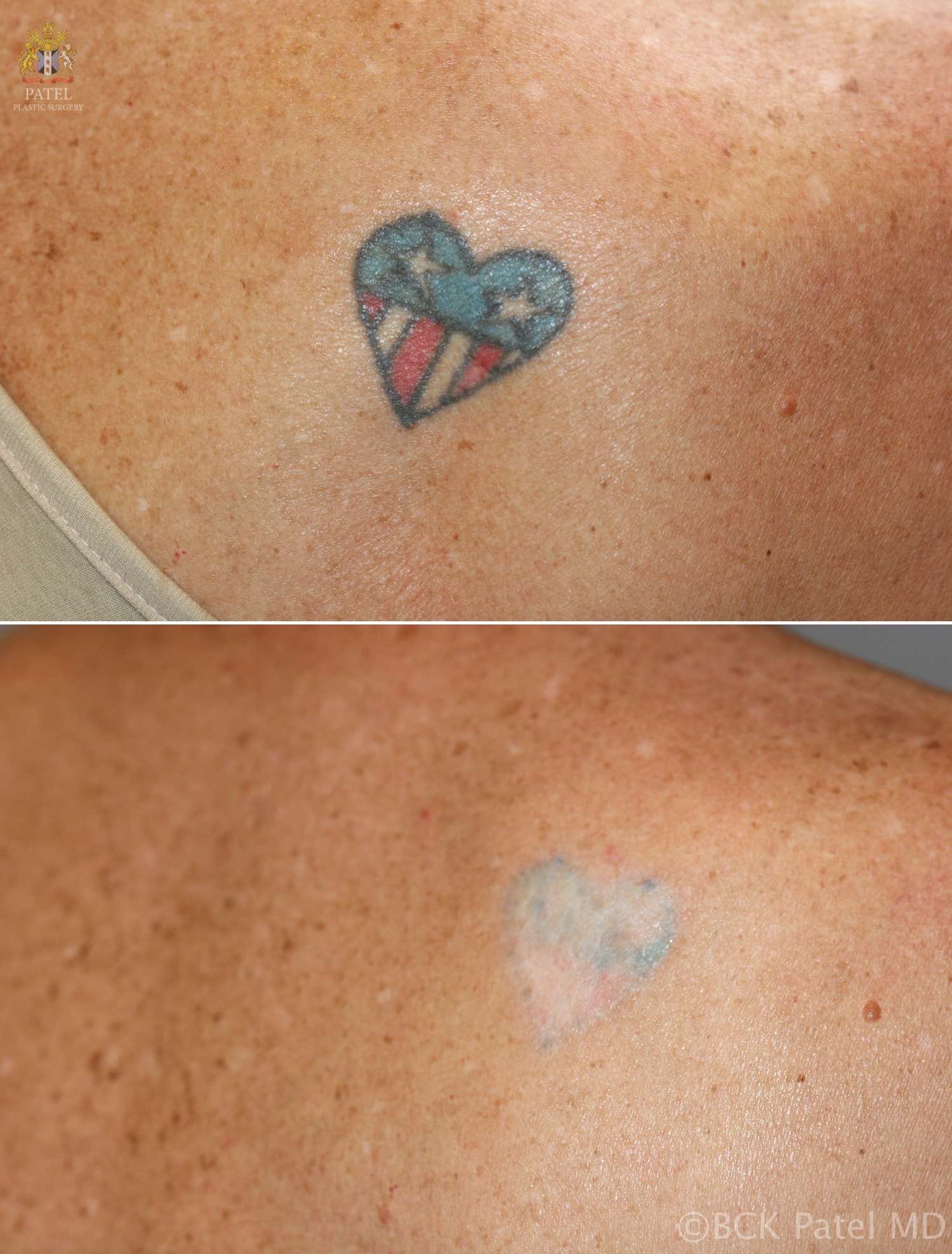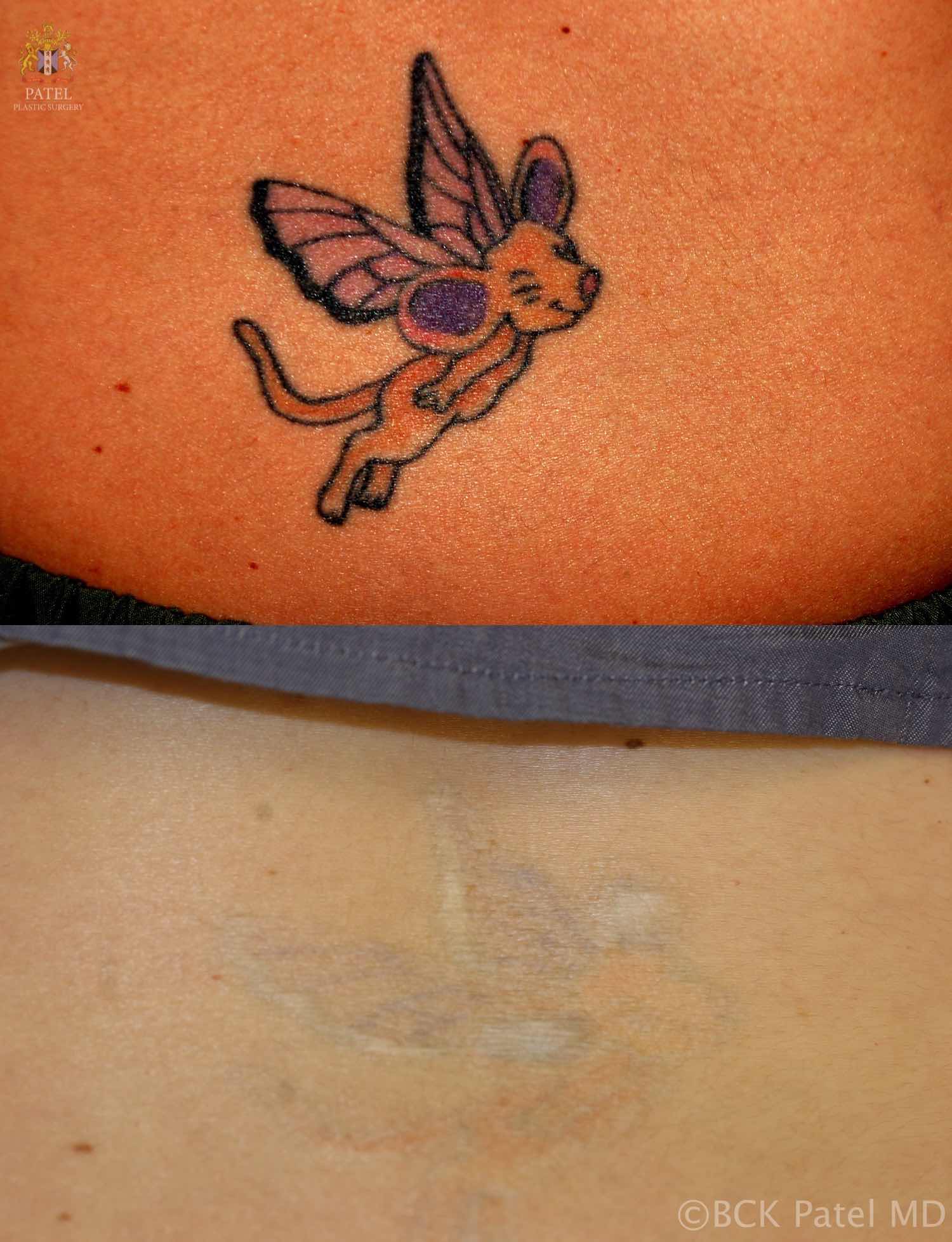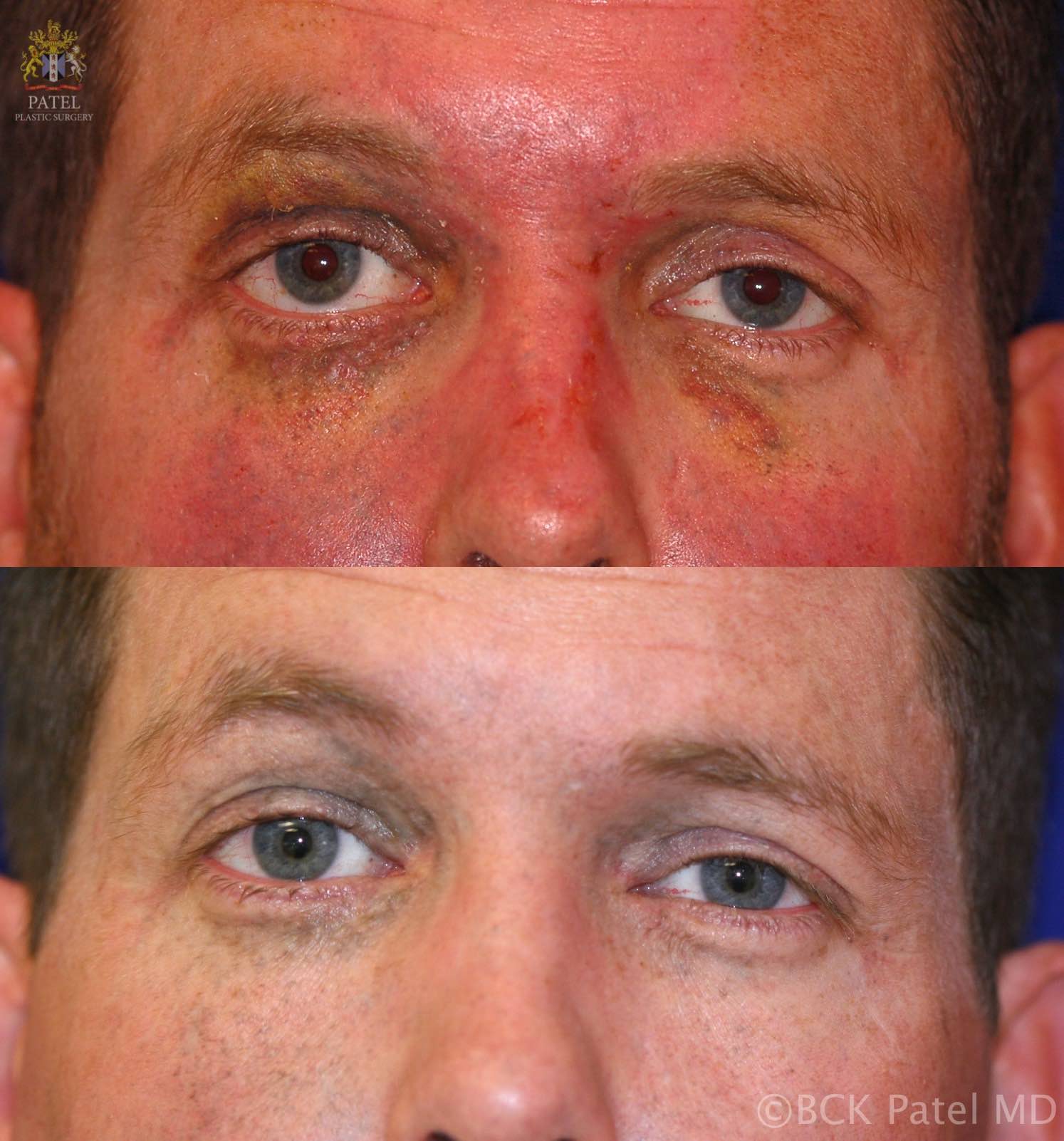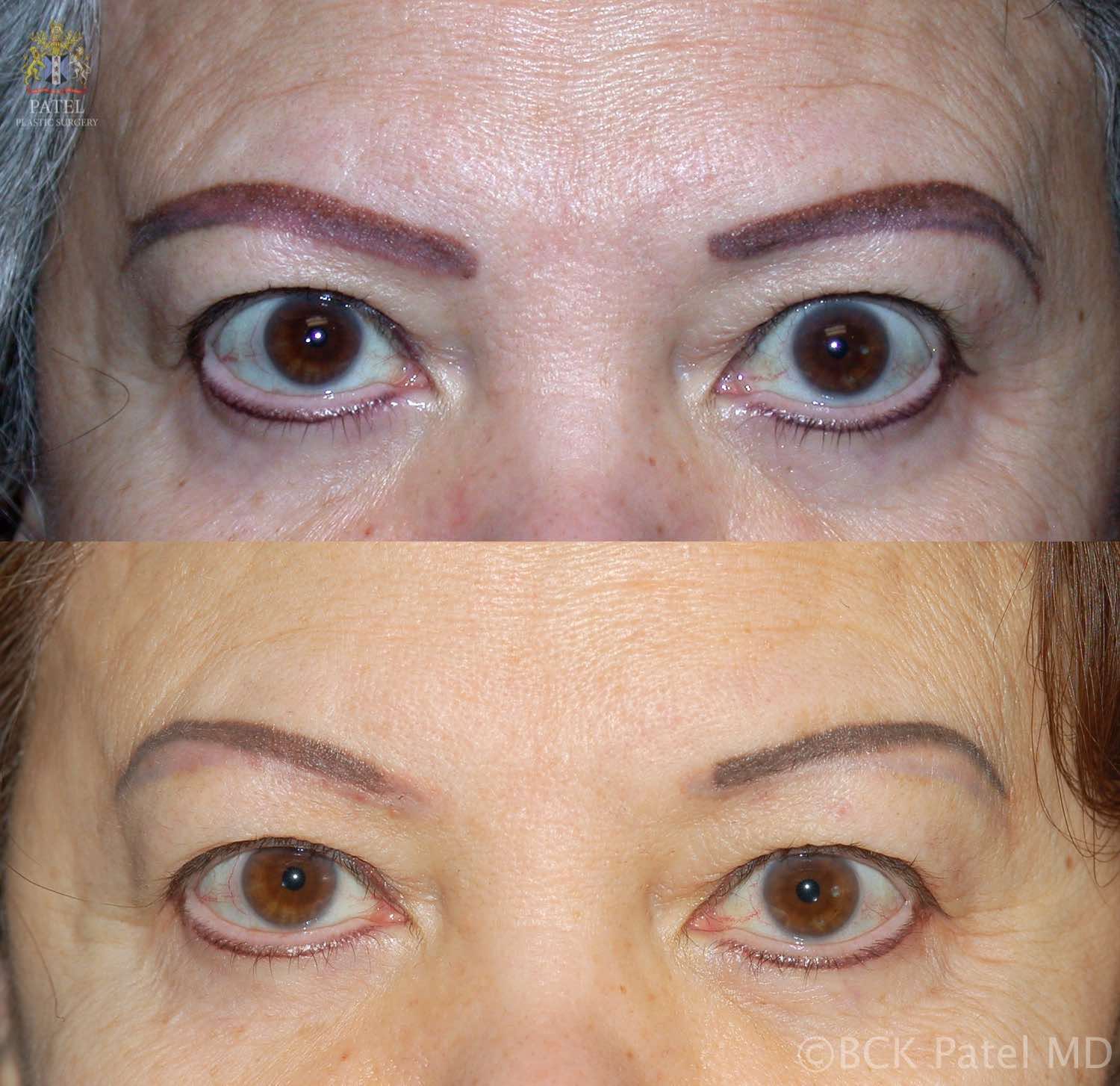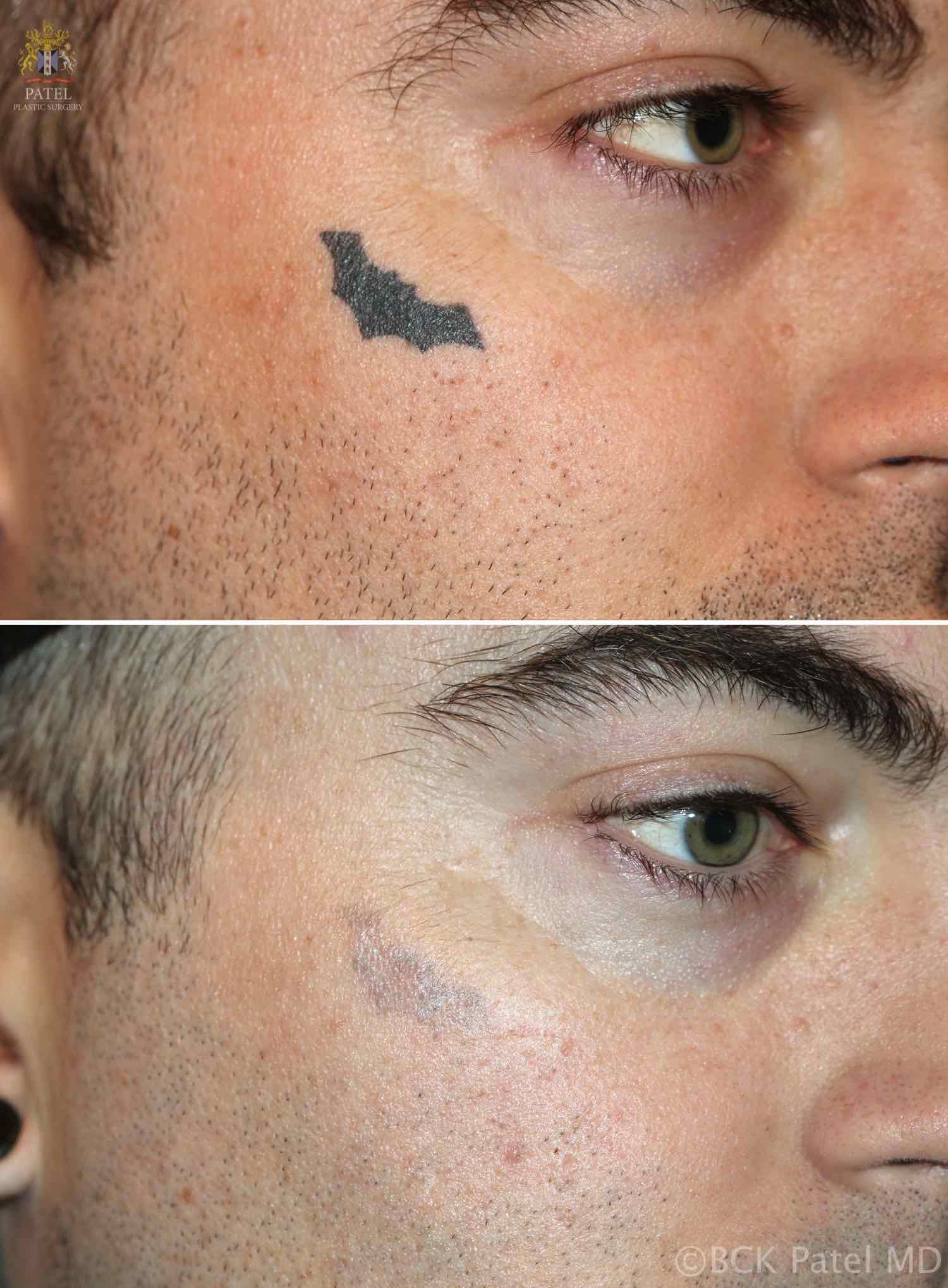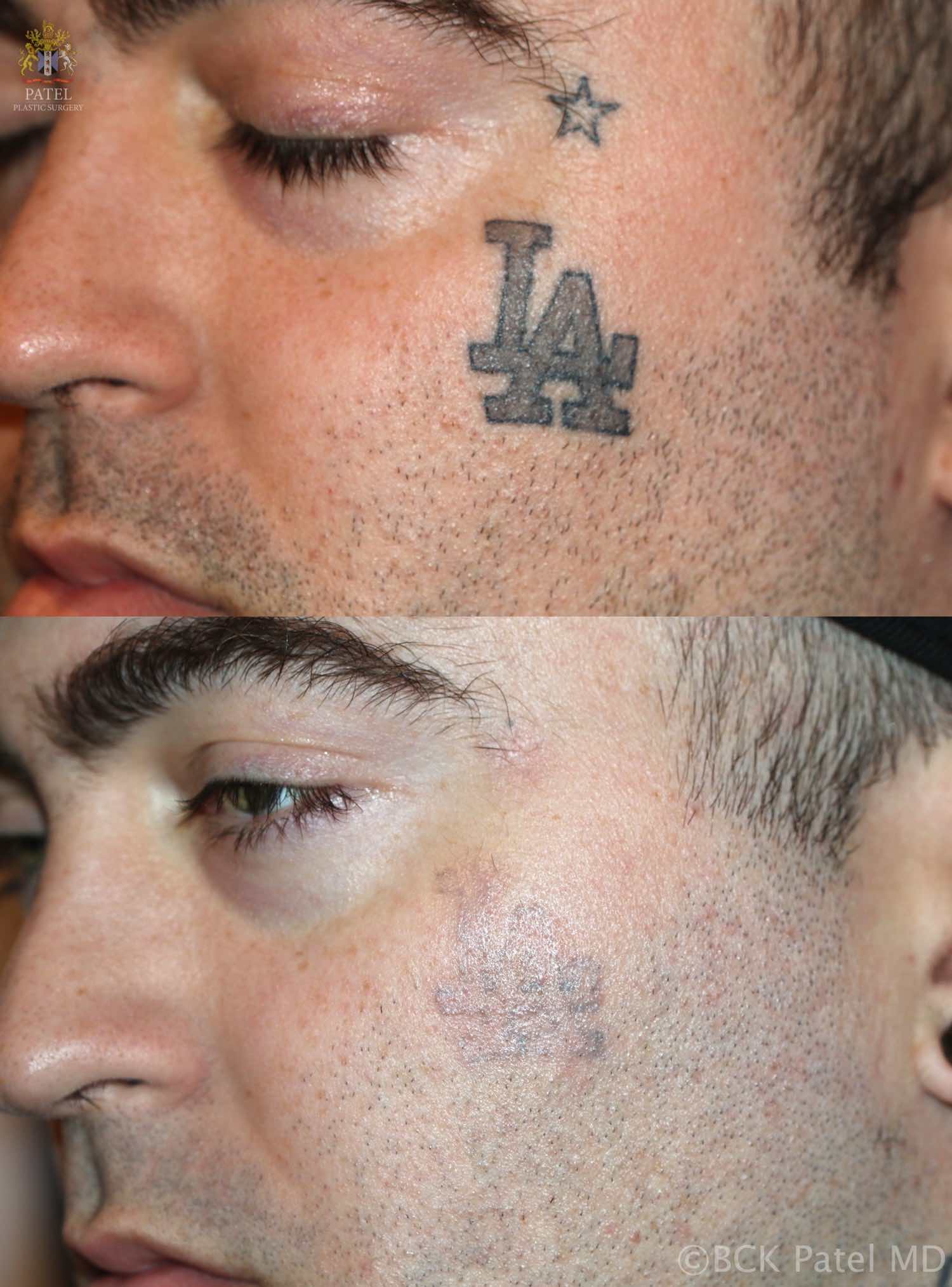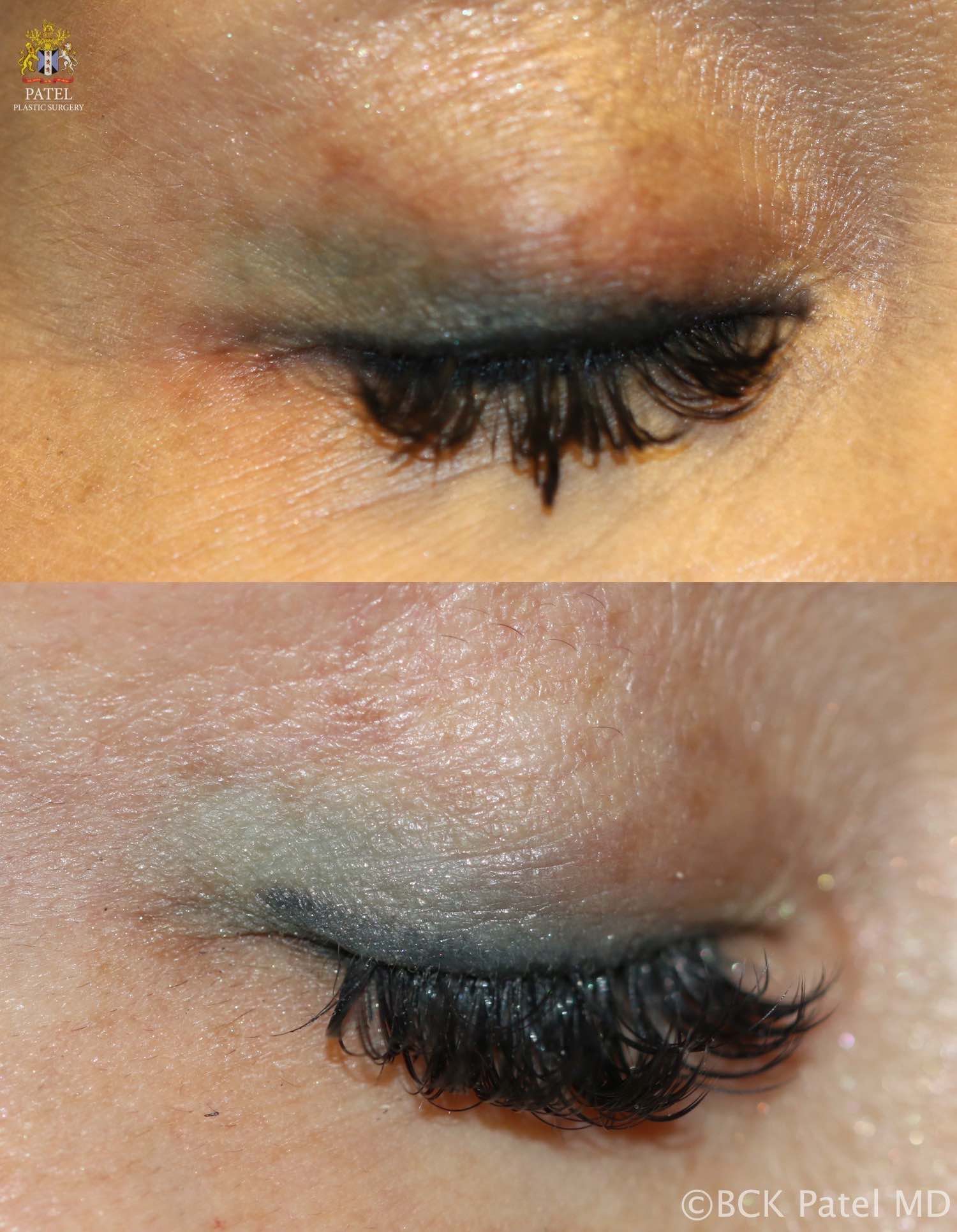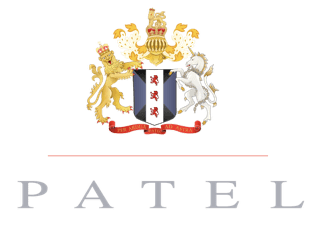LASER TATTOO REMOVAL
Regrettable tattoos.......
LASER TATTOO REMOVAL
The most common tattoo people want removed, is the name of an ex!
Sometimes, tattoos just remind us of a person we no longer want to be with......
Important Note: Dermatological Lasers are the safest and most effective way to remove skin tattoos. Non-laser methods such as injecting acid in the skin to remove tattoo can be dangerous and can result in serious infection and scarring.
Tattoos: easy to get, so difficult to remove!
Please Read This Article Before Choosing Your Tattoo Removal Provider.
Unfortunate tattoos…….
What is Laser Tattoo Removal?
Lasers have been used for tattoo removal for more than 20 years and remain the gold standard in removing tattoos today. Over the past few years, several non-laser based tattoo removal techniques have emerged with extraordinary claims about their ability to remove professional tattoos is questionable and often dangerous to the skin.
The laser emits a pulse of light that is absorbed into certain colours of ink. The laser light penetrates the skin at high speed (billionths of a second) that produces a shock wave effect that disperses the ink particles into smaller pieces. The body then identifies these particles as something that shouldn;t be there and attacks and removes these via the bodys immune system.
Can any colour be removed?
In our experience, not all colours respond very well to Laser treatment. Blacks and reds are removed effectively as well as some brown, purple, orange, pink and occasionally yellow ink. Greens and blues are less effective, although these can be faded by up to 50% allowing a more successful cover up. It has been found that 80-90% of tattoo images are made from black ink.
Ink Pigment Sits at different depths in the skin
Different color ink settles at different depths of the skin. Black ink settles the deepest in the skin, Blues/Greens settle mid skin and Reds/Oranges settle at the surface of the skin. In order to successfully treat different ink colors, you need different wavelengths to properly target each color and its depth within the skin.
You Can’t Change Physics
In the world of tattoo removal, the two most important factors a wavelength has is 1) how deep the wavelength penetrates the skin and 2) what color(s) does the wavelength target.
When taking into account where ink colors reside within the skin, research has proven the best wavelength to successfully target dark pigment (Black, Dark Blues, etc.) is the ND:Yag 1064. The best wavelength to target the difficult Blue and Green colors is the 694 and the only wavelength to target Red is the 532.
How many treatment sessions do I need?
Every tattoo responds differently due to a number of variables. The age of the tattoo, the depth of the ink and whether it was a professional or amateur piece will determine the number of sessions required. Then there are variations in ink colors and their chemical compositions, density of ink placement, skin type and individual immune system factors. Predicting how many treatments any particular tattoo will require is an educated guess. During your consultation, we will make an estimate of the number of tattoo removal sessions needed to remove your tattoo. On average most black ink tattoos require between 7 to 10 sessions spread over several months. Getting the tattoo was the easy part!
How is Revlite™ Laser different to Picosure™ Laser?
Both Revlite SI™ and Picosure™ lasers are manufactured by the same US company, Cynosure™(Cynosure recently purchased Hoya Conbio). Revlite is a Q-Switched Laser operating in a nano second range delivering 1064 nm and 532 nm wavelengths and with MultiLite Dye Handpieces extending the wavelength capabilities to include 585 nm and 650 nm. Hence, 4 wave lengths to target the most diverse range of tattoo inks. Picosure™ Laser operates in pico second range but able to generate only one wave length, 755.
- It can stop short of deep black colour due to shorter wavelength hence, potentially, not being able to fully remove the ink.
- It can not remove red coloured inks.
How frequently can I return for follow up treatment sessions?
Tattoo fading is a slow process and depends on participation by your body’s immune system to work. We recommend that you wait at least 4-5 weeks to get the greatest value from each laser treatment.
Does it hurt?
The discomfort of laser tattoo removal is often described as a “rubber band snapping the skin” but can vary from client to client. We do our utmost to minimize any pain or discomfort possible. We also use high-strength topical numbing cream as well has skin cooling with cryo-chiller device, both of which working together are highly effective. Some tattoos need local anesthetic injections.
If the tattoo looks healed can I come in before six weeks?
It takes four weeks for the body to start breaking down the ink and even though the tattoo may appear healed, it is not. The laser breaks the ink down into smaller pieces and then the body has to get rid of it. This process takes 4-6 weeks so getting treated sooner than that will not make the tattoo remove any quicker and can also put you at risk for scarring.
What are the limitations after treatment?
Limit the amount of physical activity that you do and sun exposure for the first 24 hours. If the body gets too over heated it can cause the tattoo to blister. Showers can be taken but only if they are luke warm and use mild soap.
Can I have just a portion of the tattoo removed?
Yes, the laser is accurate and can remove unwanted parts of a tattoo.
I have permanent make-up (lip liner, eyeliner, eyebrows). Can you remove it?
Yes, this is the most commonly performed laser tattoo removal treatment. There is a small risk associated with it. Some cosmetic inks have metallic bases and when the laser beam hits it, it can turn black. Once this darkening occurs, it can take several sessions to fix it. A test spot is always done first. Please see the photos below of leaked eyelid tattoos and eyebrow tattoos that we improved with lasers.
How much does it cost?
The price of the treatments depends on the size of tattoo you are having treated. We will have to take a look at the tattoo to see the exact size of it because we do not charge for open space. Most people tend to overestimate the size of their tattoo. For reference, a coin sized tattoo costs $150 per session.
Can I lighten the tattoo to have another one put on top?
Of course, depending on the colors of the tattoo we recommend have 3-5 treatment sessions done to lighten it before having a cover up tattoo put on. You should wait six weeks between your last treatment and when you put on the new one. Many of our patients return to have the second tattoo removed, however!!
Will I blister and scab afterwards?
Blisters and scabs are normal. You should not pop or pick at them. If it is bothering you feel free to call us to come in and have it drained. If the blister pops on its own, keep the skin over it and cover with a healing ointment and gauze. This will promote healing and prevent scarring.
Does insurance cover it?
Unfortunately, health insurance does not cover this procedure.
I got my tattoo one week ago. Can I have it removed right now?
Unfortunately no. You must wait six weeks after a tattoo has been put on to start the removal process.
Are all tattoo removal lasers the same?
It is important to understand that not all tattoo removal lasers available today are the same. Only top of the range Class 4 (C4) Q-Switched Lasers from the US and European manufacturers are able to properly tackle the inks of professionally done tattoos. These high end laser platforms are extremely expensive (over $100,000). There are several laser machines manufactured in China and Korea,: these devices are not able to remove professionally done tattoos and often deliver suboptimal results and have a significantly higher risk of tissue scarring. It is imperative for anyone wanting to have a tattoo removed, to ask about the professional qualification of their service provider and what laser device is being used in house.
What is the aftercare like?
Aftercare of laser tattoo removal is very similar to the aftercare you had to follow after you had the tattoo! During laser treatment, your tattoo may turn white briefly. It then swells somewhat and may turn red, but this usually lasts only a few hours. It is important to keep that tattoo covered with ointment and a bandage for the first day. Usually, it feels like a mild sunburn and does not hurt unless rubbed against. Between your treatments, it is important to keep the tattoo covered from the sun to prevent hyperpigmentation (darkening). You will receive detailed instructions during your appointment.
Why you should avoid other tattoo removal methods?
There are other ways to remove tattoos but the results can be disappointing and carry a relatively high complication risk. Injections, creams, acid and other non-laser methods are, in our experience not just ineffective but potentially hazardous. If these low-cost alternatives worked, we would use them. You need to know all the facts before making a decision on tattoo removal.
Acid, or chemical removal: These methods involve the use of a concentrated caustic compound to chemically burn skin tissue to the depth of the tattoo itself. This can obliterate the tattoo but only through the formation of scar-tissue, which may still contain pigment. Scarring is inevitable but removal is not! A number of science sounding acronyms such as Trans Epidermal Pigment Release (TEPR), have been used to mask what is, quite straight-forwardly chemical burning!
-Dermabrasion: To remove the pigment, layers of skin are removed and full thickness scarring will result. If the treatment fails to go deep enough only partial thickness scarring will occur but remnants of the tattoo can remain.
-Surgery: Removing the skin which contains the tattoo and replacing it with a partial thickness skin graft from elsewhere on the body – two areas of scarring will result.
Experience The Difference Today if you want your tattoo reduced or eliminated!
Call us for an appointment so we may give you an idea about the number of treatments and the degree of improvement one may be able to obtain…..
(801) 413-3599 (phone/text)
E: in**@pa*****************.com
bckpatel.info
Quick Enquiry
Short on time? Simply send your enquiry here and we will get back to you with more information.
www.englishsurgeon.com: Site of the "English Surgeon" website. Dr. BCK Patel MD, FRCS, Salt Lake City, St. George, Layton, Orem, Mid-Town, Utah; London, England
Originator of London Blepharoplasty, London Facelift, London Browlift, Patel Hammock Lift, SMURF Festoon Correction. Created by Patel Plastic Surgery - Dr. Bhupendra C. K. Patel MD, FRCS
Dr. BCK Patel MD, FRCS 1025E 3300S Salt Lake City, Utah 84106, USA (801) 413-3599 (phone/text) E: in**@pa*****************.com
Dr. BCK Patel MD, FRCS 585 E Riverside Dr Suite 201 Saint George, UT 84790 (435) 215-0014 E: dr********@gm***.com
